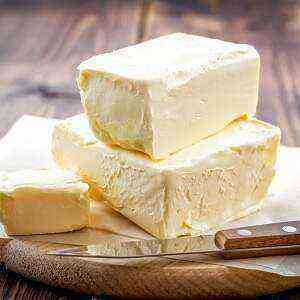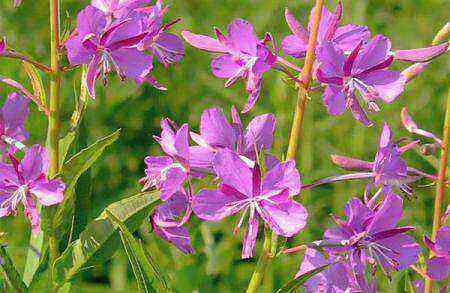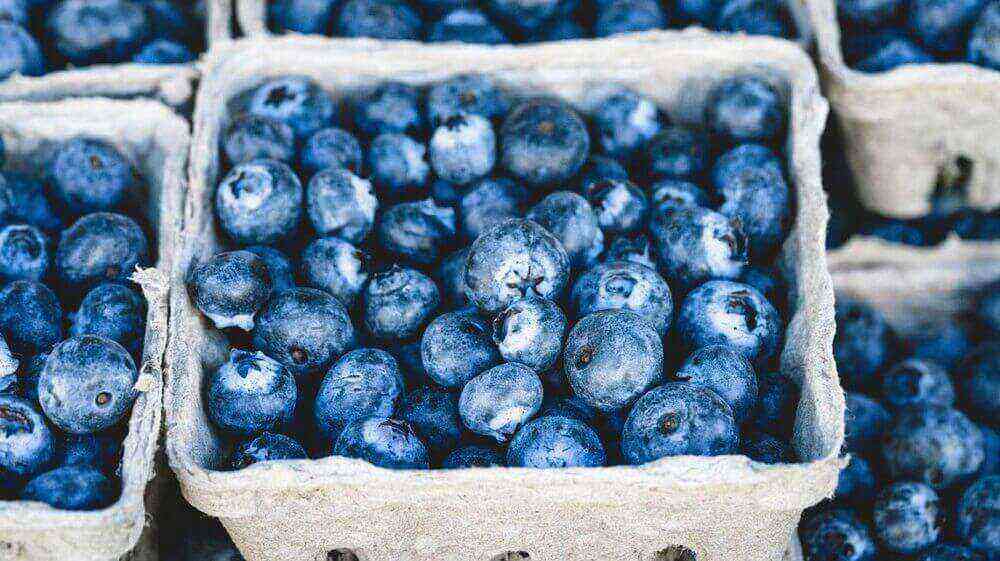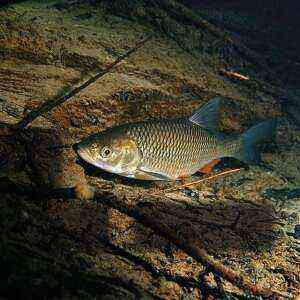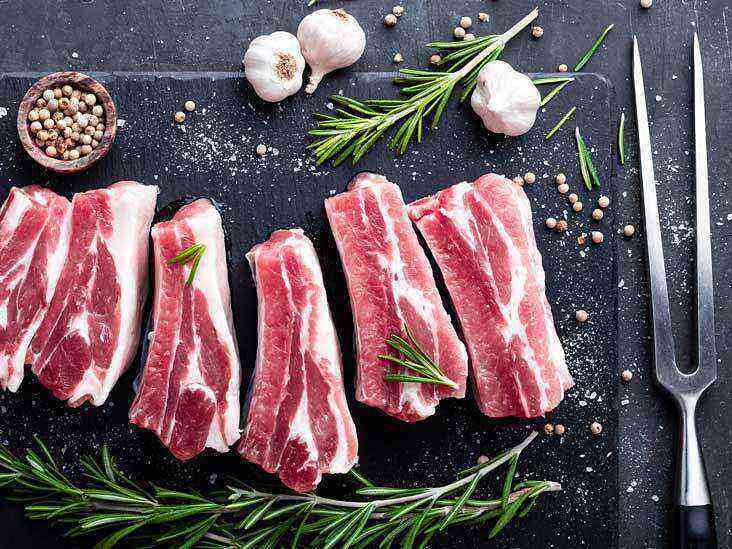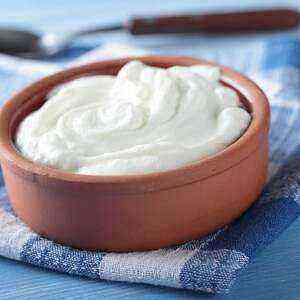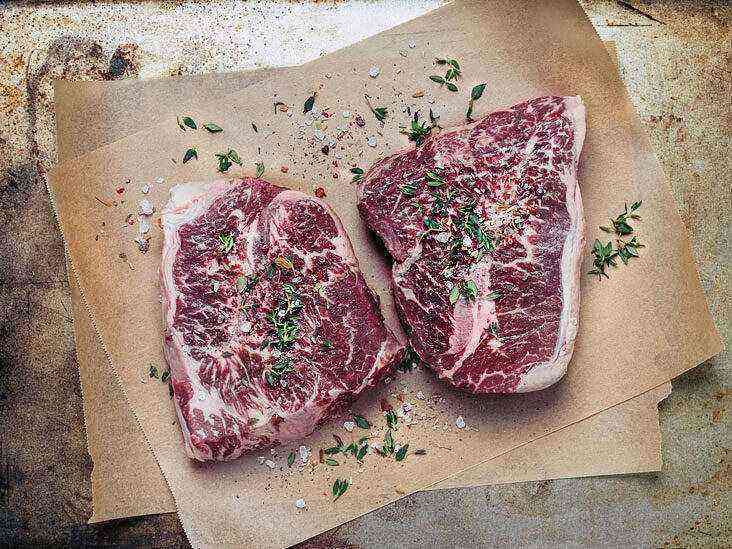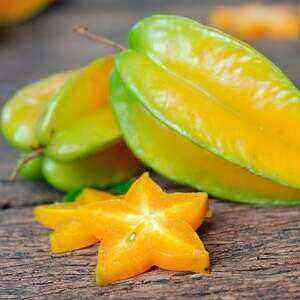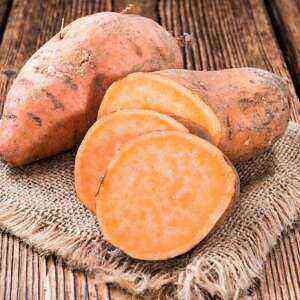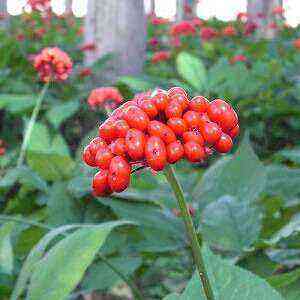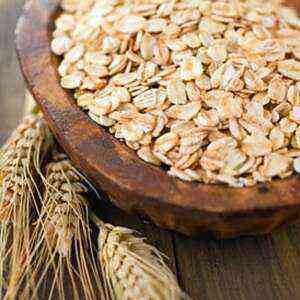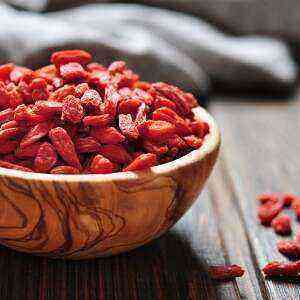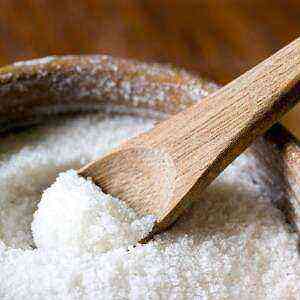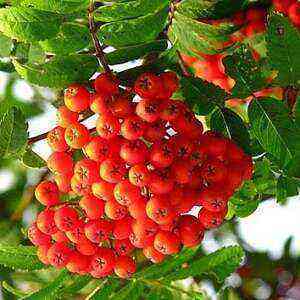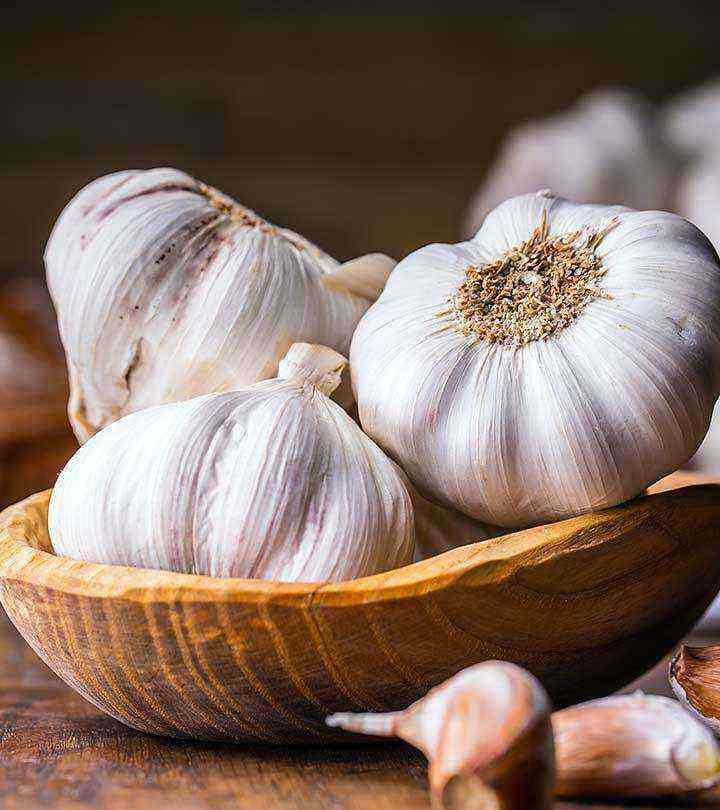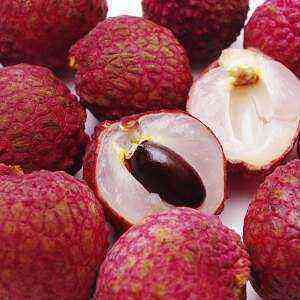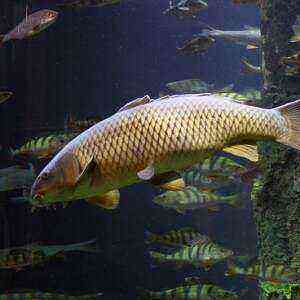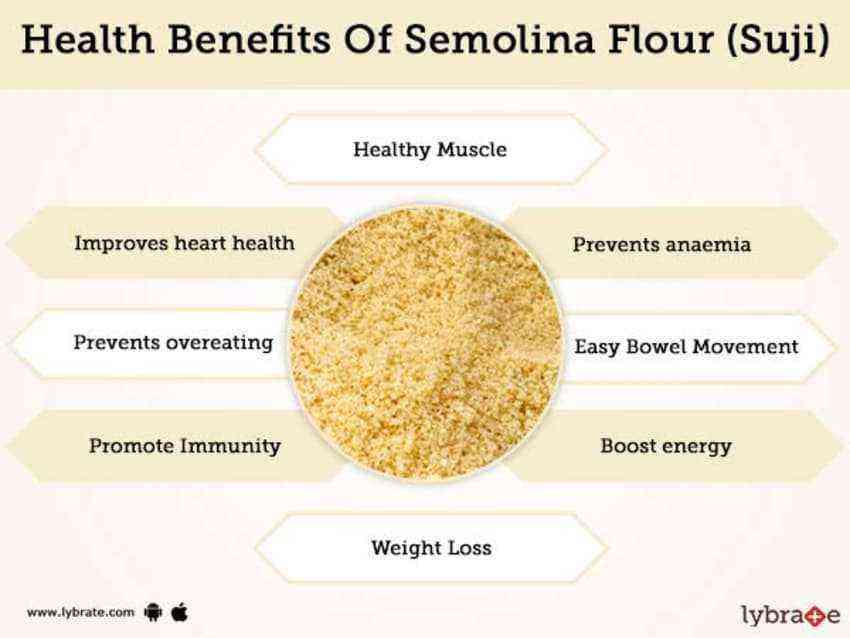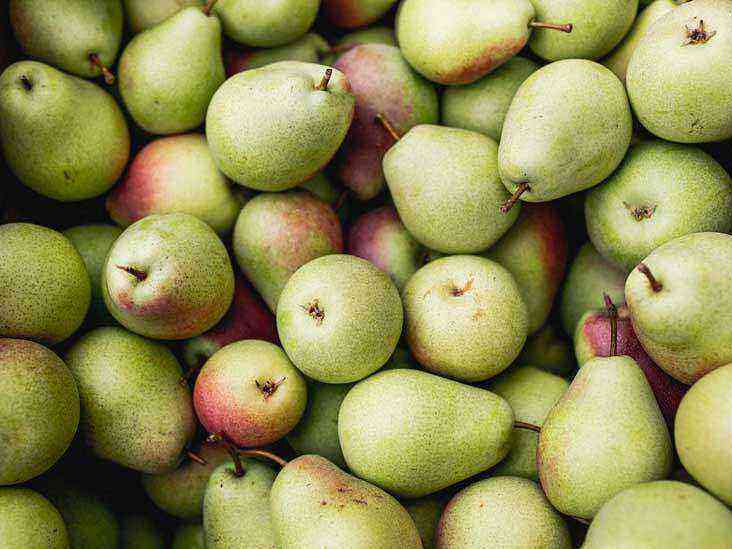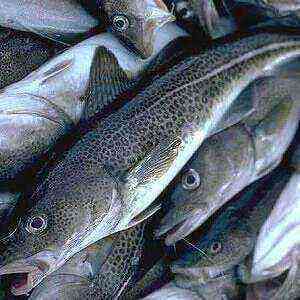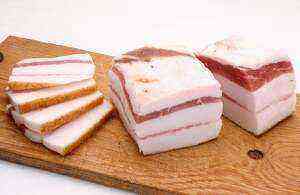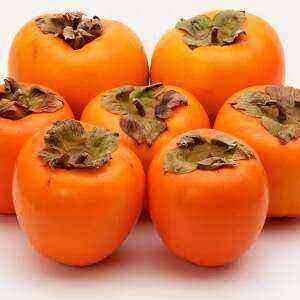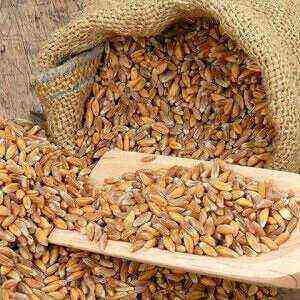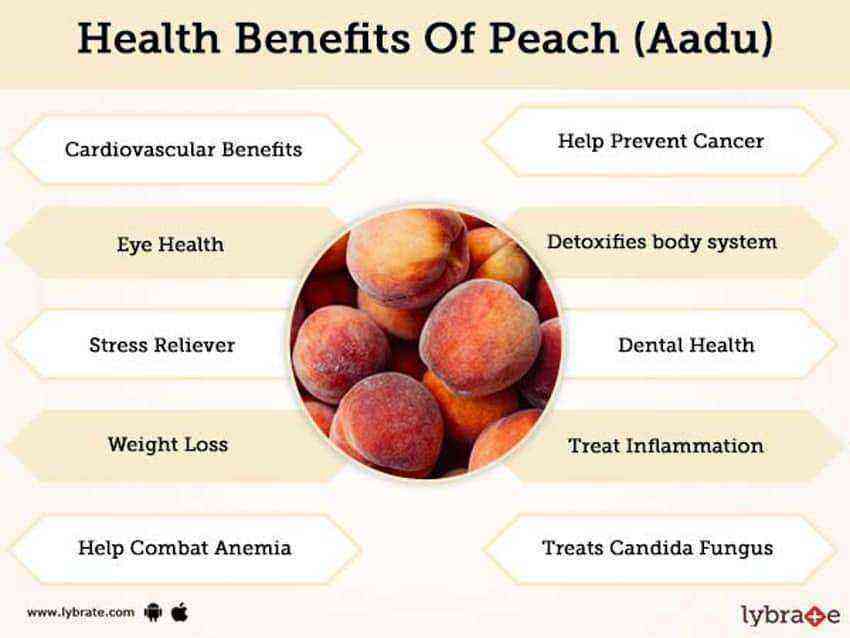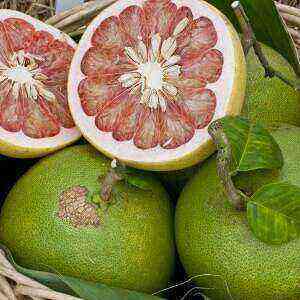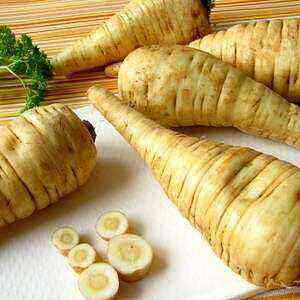
Parsnip is a dietary product that has an analgesic, bactericidal, sedative, and also a strong diuretic effect. Vegetable juice is rich in silicon, chlorine, potassium, phosphorus, sulfur – useful food for patients with pneumonia, bronchitis, tuberculosis, emphysema.
The root crop is used not only for medicinal purposes, but also in cooking. Dried parsnips are ground into powder and added to seasonings. This is a must-have ingredient in canned food. Spicy herbs are used to flavor vegetable dishes, soup mixtures.
Botanical description
Parsnip is a perennial herb with a fleshy root. The homeland of white carrots is the Altai Territory and the south of the Ural Mountains. The stem is pubescent, grooved-faceted, rough, sharp-ribbed, erect, branched in the upper part. Depending on the species, the plant height is 30–100 cm. The leaves are alternate, pinnate, consisting of 2–7 pairs of pubescent sessile lobed ovate or large serrate leaves. The upper ones are sessile, with a vaginal base, the lower ones are short-petiolate.
The flowers are regular, five-membered, bisexual, small, collected in an umbrella, consisting of 5-15 rays. The corolla is bright yellow, the calyx is almost invisible, without wrapping or wrapping.
The blooming period of parsnip is July-August, ripening is September.
The fruit is a flat-squeezed, yellowish-brownish, rounded-elliptical droplet. The root is rounded, but more often cone-shaped, pleasantly smelling, thick, white, with a sweetish taste, yellowish-brown or yellowish-gray on the cut.
The smell of parsnips resembles celery, in appearance – carrots. The upper part of the roots, near the stem, has a sharp taste.
The main difference between parsnips and carrots is a large root vegetable. This should be taken into account when planting a weighty vegetable. The distance between parsnip seeds should be 2-3 times greater than the same distance between planting carrots.
Among the popular types of parsnip are: Klaus, forest, thigh-leaved, Armenian, sowing, shady.
Chemical composition
The fleshy root of parsnip is a combination of nutrients: fiber, pectin, fatty and essential oils, starch, protein, vitamins, minerals, saccharides. The entire community of biologically active substances endows a relative of carrots with pronounced antirheumatic, antioxidant and diuretic properties. This is a powerful immunomodulatory product recommended for use by all people, especially during wound healing, in the postoperative period, as well as at the stage of recovery from a serious illness.
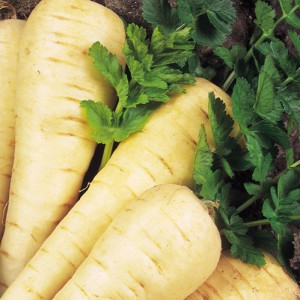
Table № 1 “The chemical composition of parsnip (root)”
Name
Nutrient content, mg per 100 g of product .
Vitamins
Ascorbic acid (C) 20 Niacin (PP) 1,2 Tocopherol (E) 0,8 Pantothenic acid (B5) 0,5 Pyridoxine (B6) 0,11 Riboflavin (B2) 0,09 Thiamine (B1) 0,08 Retinol (A) 0,003 Folic acid (B9) 0,02 Biotin (H) 0,0001
Macronutrients
Калий
529
Фосфор
53
Кальций
27
Магний
22
Натрий
4
Trace Elements
Iron 0,6
Essential oils concentrated in flowers, fruits, roots and leaves of the plant give a pleasant aroma to parsnips. The vegetable contains the polyhydric alcohol mannitol, which has a sweet taste. Furocoumarins are found in the fruits, which increase the body’s sensitivity to the influence of sunlight.
Interestingly, parsnip leaves contain 5 times more vitamin C (108 mg per 100 g) than root vegetables (20 mg per 100 g).
In terms of the amount of easily digestible carbohydrates, white carrots take the leading place among root crops. And the complex of nutrients in parsnips is similar to the composition of biologically active compounds in spinach leaves.
<font><font>Materials</font></font>
Pasternak is a source of dietary fiber that provides healthy digestion, early satiation during the meal, cleansing and systematic weight loss.

- strengthens the walls of capillaries;
- increases appetite;
- prevents dementia, fractures aggravated by osteoporosis, heart disease;
- lowers blood sugar and cholesterol;
- stimulates cell growth and regeneration;
- improves blood circulation;
- soothes the central nervous system (CNS);
- normalizes digestion;
- relieves pain;
- stimulates the endocrine glands, the dissolution of stones;
- increases sexual desire;
- interferes with the secondary absorption of urine;
- removes salts, stones and toxins;
- prevents the appearance of malignant tumors, anemia, bronchial asthma.
Despite all the beneficial properties, parsnips can harm the health of people, for example, those who have large kidney stones, since the vegetable stimulates their excretion, which poses a threat of blockage of the urinary tract. ..
Among other contraindications to the use of root crops, the following are noted:
- exacerbation of pancreatitis;
- idiosyncrasy;
- children and old age;
- severe kidney and liver diseases;
- inflammation of the skin (photodermatosis).
On contact with wet skin, parsnip leaves and fruits cause severe burns, increase the sensitivity of the dermis in direct sunlight ..
Folk remedies
Parsnip furocoumarins have a photosensitizing effect and also have a slight antispasmodic activity. The high content of phosphorus and chlorine determines the use of the plant in the fight against inflammatory processes in the lungs and bronchi, silicon and sulfur – brittle nails, potassium – mental disorders.
- Broth. It is prescribed as a tonic, tonic for general loss of strength, urolithiasis, cough, angina pectoris, neuroses, stomach cramps, cystitis, prostatitis, pneumonia, bronchi. Method of preparation: pour 15 g of dried parsnip roots with 250 ml of distilled (purified) water, boil for 10 minutes. Insist the resulting broth for 5 hours, then strain. Take 100 ml twice a day. The course of treatment is 10 days.
- Tea. Dried leaves (20 g) pour 500 ml of boiling water, leave for 15 minutes, drain. It is believed that tea with parsnips has a mild sedative effect, relieves the condition of patients with hallucinations, delirium tremens. Regular intake of a hot drink promotes the production of melanin, destroyed under the influence of ultraviolet radiation, improves skin condition, normalizes the psycho-emotional background, and strengthens the immune system.
- Cocktail. Components of the medicinal drug: parsnip roots, water, honey. The drink is prescribed to patients to restore the body in the postoperative period, after serious illness. To prepare a cocktail, make a decoction, cool, before use (a single dose is 100 ml), mix it with 10 ml of natural honey. The duration of the course is a month. Take 30 minutes before meals 3 times a day.
- Infusion. It is a folk remedy that has analgesic and antispasmodic effects. It is prescribed for spring ailments, diseases that are accompanied by fluid retention in the body. This remedy is also used for vitiligo (a violation of the pigmentation of the epidermis). Tincture of herbs with vodka (1: 5) should be rubbed into discolored spots once a day, lubricating the surrounding skin with a protective cream. The dermis is then irradiated with the sun. On the first day, the duration of exposure to UV rays is one minute. The exposure is gradually increased by 1–1,5 minutes. The course of therapy is 3-4 weeks ..
- Hair strengthening mask. To prepare it, you will need: dry powder and infusion of parsnips, a moisturizer. The mask prevents baldness, strengthens the hair follicle. All ingredients are mixed in equal proportions and applied, after steaming the body, with massage movements on the scalp. The product is washed off after 15 minutes with warm water without using shampoo.
- The juice. Reduces the acidity of gastric juice, relieves spasms and pain, eliminates unpleasant odor from the oral cavity, removes phlegm, regulates food digestion, saturates the heart muscle with potassium, normalizes metabolism, and increases the body’s barrier functions in the fight against infectious diseases. To prepare a healing drink, the parsnip root is washed, dried, peeled, crushed and passed through a juicer. Store no more than a day.
For the treatment of pneumonia, 50 ml of squeezed juice is diluted in 200 ml of water, 20 ml of honey is added. Divide the resulting solution in half. Take one part on an empty stomach in the morning, the other before lunch. Likewise, before afternoon tea, dinner. The course of treatment is 6-10 days until recovery.
To stimulate reproductive functions, parsnip juice (50 ml each) is drunk on an empty stomach twice a day. The duration of therapy is 10 days. Then you should take a break (10 days) and repeat the course twice.
To increase appetite and efficiency, 30 ml of parsnip juice is mixed with 5 g of sugar, heated in a water bath until thickened. 100 ml of hot milk is poured into the resulting mixture, the contents are thoroughly mixed. Drink at one time twice a day. The duration of treatment is 10 days.
To remove the sand from the buds, the juice from the roots and leaves of the plant (30 ml) is diluted in 100–150 ml of water. The contents are drunk in one gulp 3 times a day for several weeks. This method cannot be used in the presence of large or multiple calculi in the kidneys.
For the treatment of lingering stress and depression, 50 ml of parsnip juice is diluted in 250 ml of vodka. The contents are insisted for two days. Take 5 ml, diluted in water, three times a day for 10-15 days.
Remember: traditional methods of getting rid of ailments cannot replace qualified medical care. Only a correctly selected combination treatment, strictly under the supervision of a doctor, is the key to a quick recovery.
Cooking application
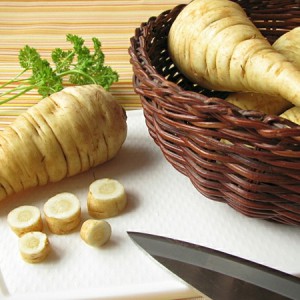
The roots and leaves of parsnips are consumed fresh, dried, boiled, stewed. The root crop turns black when cutting, like the potatoes. To prevent this, the chopped pieces are immersed in water.
The duration of cooking a vegetable depends on the method of cutting it: large slices are cooked for 20 minutes, small slices – 10 minutes. This time is enough to soften the fruit to a puree state.
Cooked parsnips taste like a sweet nut. It is added to some types of wines, pastries, and elite flour for baking. The vegetable is used in the preparation of meat, fish, vegetable dishes and soups. It is useful to use the product in the form of freshly squeezed juice. For a variety of flavors, white carrots can be used instead of beets in a vinaigrette.
Nutritionists are convinced that parsnip is not inferior to potatoes in nutritional and taste. And in health benefits exceeds starch-containing product more than 3 times.
Fried parsnips are a traditional Christmas dish in England, USA, Canada. In Ireland, spicy rhizomes are used to brew beer. In the British Isles, white carrots are boiled, then fried in fat or juice dripping from the roast beef and served as a side dish.
To improve the taste of dishes with parsnip, they are seasoned with mustard, lemon juice, olive oil, vinegar. The fruits go well with red onions, capers, smoked fish. In addition, parsnip is used for making soaked apples, eggplant caviar, pickles and tomatoes.
The tops of the plant (stems, leaves) are not thrown away. They are added to salads as a spicy herb, and ground seeds are an exquisite condiment.
Recipes
How to cook parsnips
First of all, cut off the top from the root crop, then the thin roots. Wash the vegetable and peel like a potato, remove the dark core. Cut the parsnips into pieces, boil in salted water for 6-10 minutes, serve with butter.

mashed
Mash the boiled pieces until smooth. Add 10 g of fat per 100 g of parsnip in butter. Dilute the puree with milk, salt.
Fried parsnip
For cooking, young root vegetables are used. Cut the parsnips into thin slices, fry over medium heat with the addition of a small amount of vegetable oil until the vegetable softens and becomes golden brown. Old rhizomes are pre-blanched for 2-3 minutes, then fried and baked in the oven for 20 minutes.
Parsnip Chips
White carrots are thinly cut to length, wiped dry. A frying pan with vegetable oil (half full) is heated over a fire. Parsnip slices are fried in portions until they acquire a characteristic golden color. As a rule, this process takes no more than 2 minutes. The finished chips are removed from the oil and laid out on a paper towel to drain off the remaining fat. Sprinkle with salt, spices and serve.
Hot soup
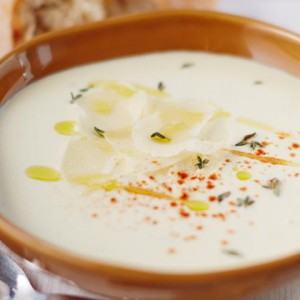
- butter – 50 g;
- parsnip – 800 g;
- milk – 600 ml;
- bulb – 1 head;
- curry (powder) – 30 g;
- chicken stock – 600 ml;
- salt;
- black pepper.
Principle of preparation:
- Peel the parsnips and onions, chop and fry in butter for 5 minutes until softened. Vegetables should not change color.
- Add curry powder to stir fry.
- Pour milk and broth into a saucepan, bring to a boil. Salt, pepper, boil 20 minutes under tightly closed lid. Cool it down.
- Chop the onion and parsnip in a blender until smooth, mix with the milk and broth. Heat the soup again, check for salt.
Baked parsnip
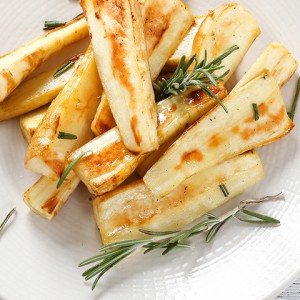
- vegetable oil – 60 ml;
- parsnips – 4 root vegetables;
- liquid honey – 75 ml;
- salt;
- pepper.
Method of preparation:
- Slice the parsnips with chopsticks, blanch the 2 minutes, dry.
- Heat the oil in a pan, fry the slices. Water them with honey. Pepper, salt.
- Put the chopsticks on a baking sheet, bake in the oven for 30 minutes before purchasing a dark brown color.
Vitamin Salad

- apple sour – 1 thing;
- parsnip – 1 thing;
- carrots – 1 piece;
- parsley, lettuce – 1 bunch each;
- low fat yogurt (no additives) – 50 ml;
- lemon juice – 5 ml;
- pine nuts – 30 g;
- salt;
- pepper.
Technology of preparation:
- Wash parsnips and carrots, peel them. Grate or cut into strips.
- Add finely chopped greens.
- Cut an apple.
- Vegetables, fruit and herbs mixed, sprinkle with lemon juice, season with yogurt, salt and pepper.
Salad is prepared just before serving, so that it does not stack. Decorate with pine nuts. Served in a salad bowl.
Used in cosmetics
Parsnip has nourishing and whitening properties, prevents the formation of wrinkles.

- in inflammatory processes;
- to combat cellulite, bruises under the eyes, acne;
- for the quick healing of acne;
- for smoothing wrinkles;
- to strengthen hair, nail plates.
For the treatment of hair loss, all parts of the plant are used: seeds, stems, roots, leaves. So, the juice of white carrots is rubbed into the roots to strengthen the follicles. It is best to perform this procedure in a bath when the pores are open.
Pasternak accelerates hair growth, makes hair thicker.
Medications
On the basis of the extract of furocoumarins (xanthoxin, bergapten) from parsnip, a photosensitizing agent “Beroxan” and an antispasmodic drug “Pastinacin” were created. Let’s consider the properties of each medicine.

- stimulates the formation of melanin when irradiated with ultraviolet rays;
- sensitizes the dermis to the action of light;
- contributes to the restoration of skin pigmentation, hair growth with alopecia.
Beroxan is used to treat vitiligo.
Mode of application [8]:
- Outwardly (0,25% solution). Rub evenly into lesions, do not rinse with water. The course of treatment is 15 rubbing and irradiation with a mercury-quartz lamp. If necessary, repeat the course in two months.
- Inside (tablets). “Beroxan” is consumed at 0,02 g 1–4 times a day 4, 3, 2 and 1 hour before a session of long-wave irradiation with ultraviolet rays. The course of treatment is five cycles of radiation, between which a 20-day break is observed. The total dose for adults is 6 g.
“Pastinacin” relaxes spasms of intestinal muscles, coronary vessels, has a sedative effect. Effective in the treatment of coronary heart disease, neuroses, various forms of coronary insufficiency (coronary heart disease, coronary neurosis), prevents angina attacks ..
This drug should be taken orally, one tablet (0,02 g) before meals three times a day for 2-4 weeks [9].
The treatment regimen (frequency, duration and dose) is determined by the doctor after the patient is examined.
Cultivation and storage
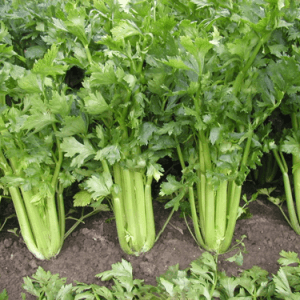
To create optimal conditions for the growth of parsnips, compost (humus) is introduced into the soil to a depth of 25–30 cm in autumn, and fertilized with nitrogen 15–20 cm below ground level in the spring.
It is recommended to start planting parsnips after cabbage, beets, potatoes [10]… Do not plant a vegetable if the predecessors were carrots, celery, dill, because in this case it will not grow well in the garden.
In the first year after sowing, the root grows, in the second – the plant blooms and brings seeds (if not dug out). Planting a vegetable takes place directly in open ground or seedlings.
The problem with growing parsnips is low germination of seeds. However, their unquestionable advantage is frost resistance.
Before sowing seeds for seedlings, they are soaked in warm water for 3 days, planted in early March. After 20 days, the first shoots appear. Seeds are planted in open ground at the end of April – May. Some species can be sown in October before winter. The seeds are buried in light soil by 2-3 cm, in heavy soil – up to 1,5 cm. The distance between rows for two-line sowing should be 20 si, for single-line sowing – 45 cm, between ribbons or rows – 50 cm.

The most common varieties of parsnip grown in Europe:
- Round. This is the earliest species. The seeds resemble black radish (in shape, size). The growing season is 110 days.
- A long. It has oblong roots. The growing season is 120–140 days. Frost-resistant varieties: Student, Guernsey.
The harvesting of the vegetable is carried out in dry weather, later than the rest of the root crops. Leaves are cut in summer (in July), sorted, dried naturally in the sun. Root crops are dug up in the fall (September-October), stored in a cool place (dry basement), sprinkled with wet sand. They can also be dried. To do this, rinse the roots, cut off the tails, cut the vegetable into pieces, lay out on paper and dry at room temperature for several days. The workpieces are put in glass jars, which need to be ventilated periodically.
Conclusion
Parsnip is a plant with a thick root, ribbed stems, feathery leaves. Like celery, all parts of the vegetable are edible. OH contains vitamins A, E, C, B, PP, H, potassium, phosphorus, magnesium, sodium, iron, calcium. It surpasses parsley in the amount of minerals.
The root of white carrots contains natural sugars (fructose and sucrose) that are harmless to diabetics. A tart spicy aroma is given to the plant by valuable essential oils, which give the product aphrodisiac properties.
Parsnip increases potency in men and libido in women, strengthens the heart muscle, and effectively fights edema. The root vegetable relieves spasms of various nature, renal colic, relieves menstrual pain, the condition of patients with acute pyelonephritis, prevents the deposition of cholesterol plaques.
Furocoumarins, which are part of the roots, increase the sensitivity of the dermis to ultraviolet light. Decoctions and infusions of white carrots relieve inflammation of the respiratory tract, facilitate the passage of sputum.
Pasternak is widely used in cooking as an independent dried seasoning, as a side dish for meat dishes, preparation and food concentrate. In cosmetology, it is used to strengthen hair, nails, smoothing wrinkles.
When choosing a root vegetable, pay attention to its color, size and density. A quality and fresh product is a white and firm vegetable, without dark spots and damage. The lighter it is, the sweeter it is. Don’t buy large root vegetables as they can be very stringy.
Sources of


